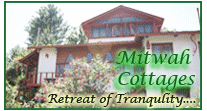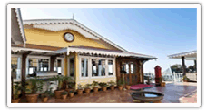About Indore
Indore is the commercial capital of the Malwa region and the central Indian state of Madhya Pradesh (MP). It is situated on the Malwa plateau, just south of the Satpura Range. It is the largest city of Madhya Pradesh.
Indore was formerly ruled by the Maratha Maharajas of the Holkar dynasty. The dynasty's founder, "Malhar Rao Holkar", (1694-1766), was granted control of Maratha armies in Malwa in 1724, and in 1733, he was installed as the Maratha governor of the region. By the end of his reign, the Holkar state was de facto independent. His daughter-in-law "Ahilyabai Holkar", succeeded him, ruling from 1767 to 1795. She ruled from a palace-fort at Maheshwar, south of Indore on the Narmada River. Ahilya Bai Holkar was an architectural patron, who donated Hindu temples across India. In 1818, the Holkars were defeated by the British in the Third Anglo-Maratha War, and the Holkar kingdom became part of the British Raj. As a result of this loss in the Battle of Mahidpur, the treaty of Mandsaur was signed and the Cantonment town of Mhow was handed over to the British. It was as a result of this treaty that the capital of Holkar state shifted from Maheshwar to Indore.
After India's independence in 1947, Indore, together with a number of neighboring princely states, became part of the Indian state of Madhya Bharat. Indore was designated the summer capital of this newly created state. On November 1, 1956, Madhya Bharat was merged into Madhya Pradesh, with Bhopal as the capital city.
HOW TO REACH
By Air : Indore has an airport, 10 km from the city, on the western side of the town. Indian Airlines and Jet Airways operate from Indore connecting Delhi and Mumbai.
By Rail : Indore is well connected to Delhi and Mumbai by rail. There is a daily Malwa Express to Delhi from Indore (807 km), via Ujjain (55 km), Bhopal (186 km), Jhansi (475 km), Gwalior (486 km), and Indore (604 km). The other broad-gauge line connects Indore to Ujjain, Bhopal, and Jabalpur (494 km).
By Road : Indore is well connected by bus with Ujjain (55 km, 1½ hours) and Bhopal (186 km, 5 hours).
PLACES OF ATTRACTION IN INDORE
• Juna Rajwada : The palace of the Holkars, the ruling dynasty of Indore, is nowhere as old as some of the greatest palaces of India and has very little history behind it. The most notable thing one can say about it is that the palace has been up in flames three times in its 200-year-old history. Built by Maharaja Malhar Rao Holkar II (1811-34) in the old part of the town, the seven-storey gateway of the Old Palace towers over the busy lanes of the Kajuri Bazaar. It is the only existing seven storied entrance of a palace.The palace consists of a splendid range of buildings that you'll love to amble through. To the right of the gateway facing the main square is the Gopal Temple (1832), a large central hall with granite pillars supporting an elaborately carved roof. The temple enshrines the idol of the family deity Malhari Martand.
• Kanch Mahal : The Kanch or Sheesh Mahal has always been a weakness of most Hindu rulers in India. It is usually a magnificent sprawling room adorned with countless mirrors. If you've been to Rajasthan, you'll probably remember the dazzling Sheesh Mahal in Amber Fort.The Kanch Mahal of Indore, however, isn't the luxury palace of a whimsical king; it is actually a Jain temple.
Located pretty close to the Rajwada, this temple is also known as Seth Hukanchand Temple. Thousands of mirrors adorn the walls, floor and ceilings of this fantastic shrine decorated with patterned ceramic tiles.
Exquisitely crafted Chinese lantern-type glass lamps and cut glass chandeliers further enhance the interior. The temple boasts of more than 50 murals depicting scenes of conversion to Jainism, sinners being tortured in the afterlife and 19 th century court life.
• Mahatma Gandhi Hall : Formerly known as the King Edward Hall, it was opened in 1905 by the future King George V. However, locally it is known by a third name: the Clocktower.
An excellent example of Indo-Saracenic architecture, it was designed by Charles Frederick Stevens of Bombay. Faced in white Seoni and red Patan stone, it has a central domed clocktower and two-storey wings terminated by domed towers. Inside is a spacious hall with a seating capacity of over 2,000. Above it are a terraced roof, minarets and cupolas in Rajput style.
• Central Museum : Located near the GPO, this museum has one of the best collections of medieval and pre-medieval Hindu and Jain sculpture in MP from the reign of the Guptas to the Paramanas.
Most of these have been gathered from the ruined 11 th -12 th century temples at Hinglajgarh. The finely carved panels portray Harihara, Shiva and Parvati seated on Nandi, standing Parvati and a damaged Chamunda.
Among the architectural fragments is a doorframe complete with figures and ornamentation. All the Hindu mythological carvings have been displayed in Gallery II. Gallery I displays artifacts from MP's prehistoric period, c 50,00-4,000BC, and also some from western Malwa including stone tools, quartz sickles, ornaments and items of domestic use
|







